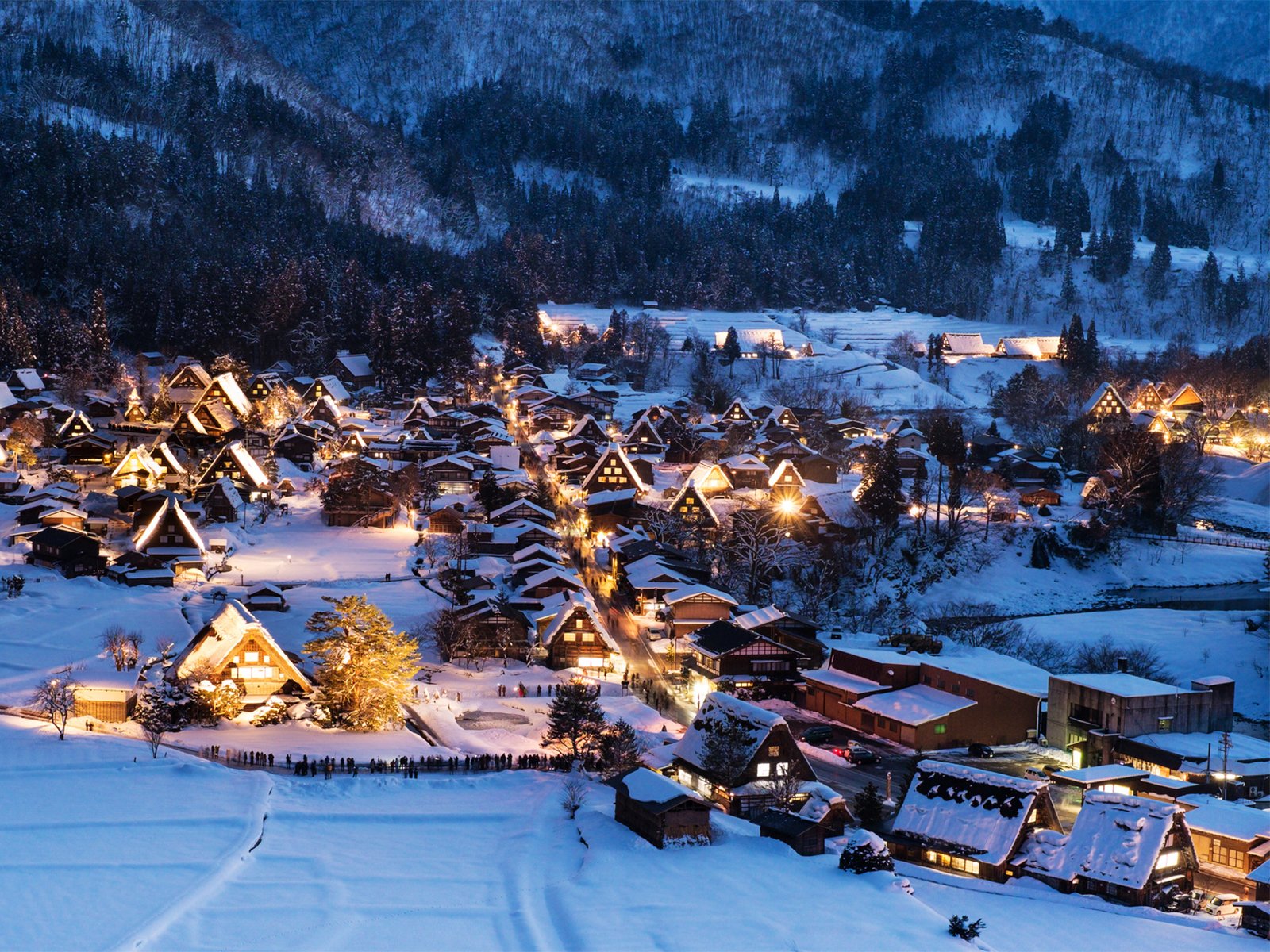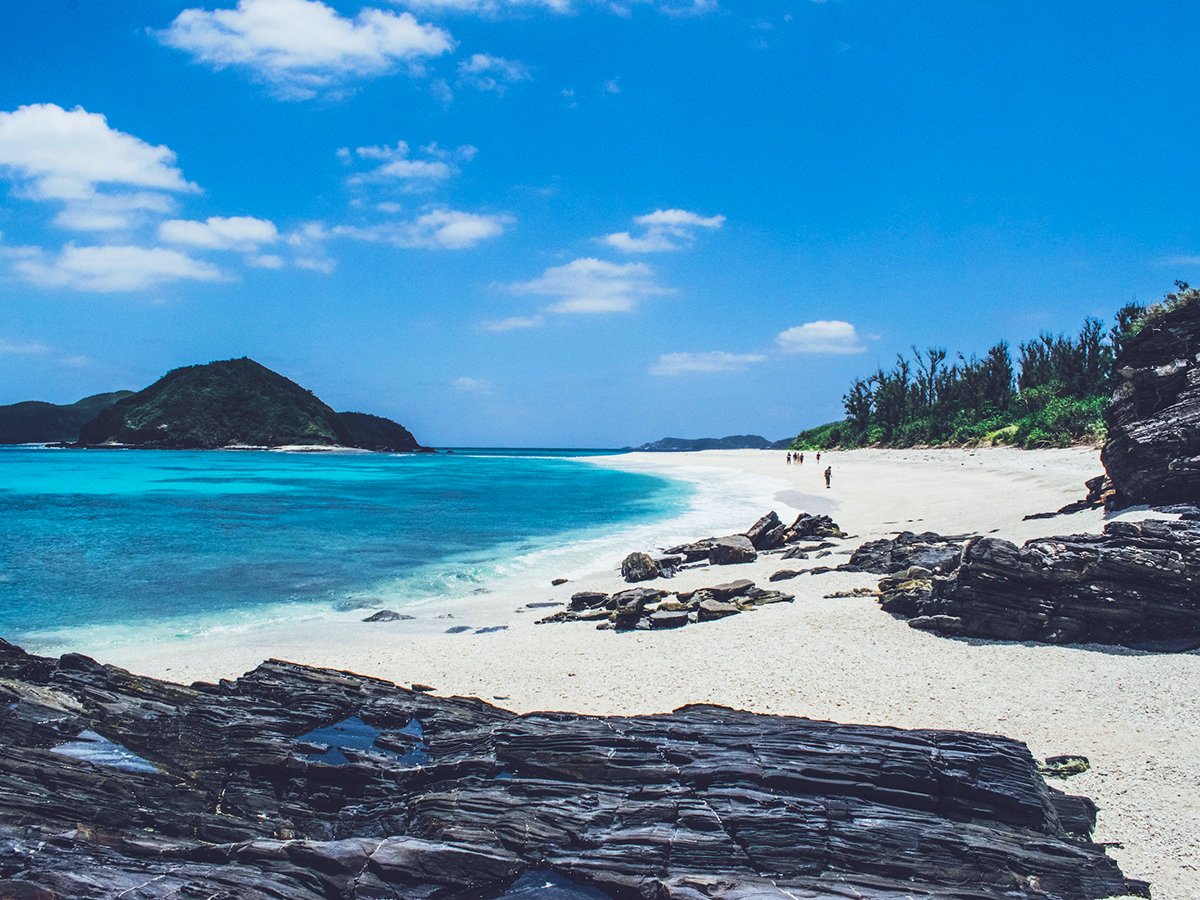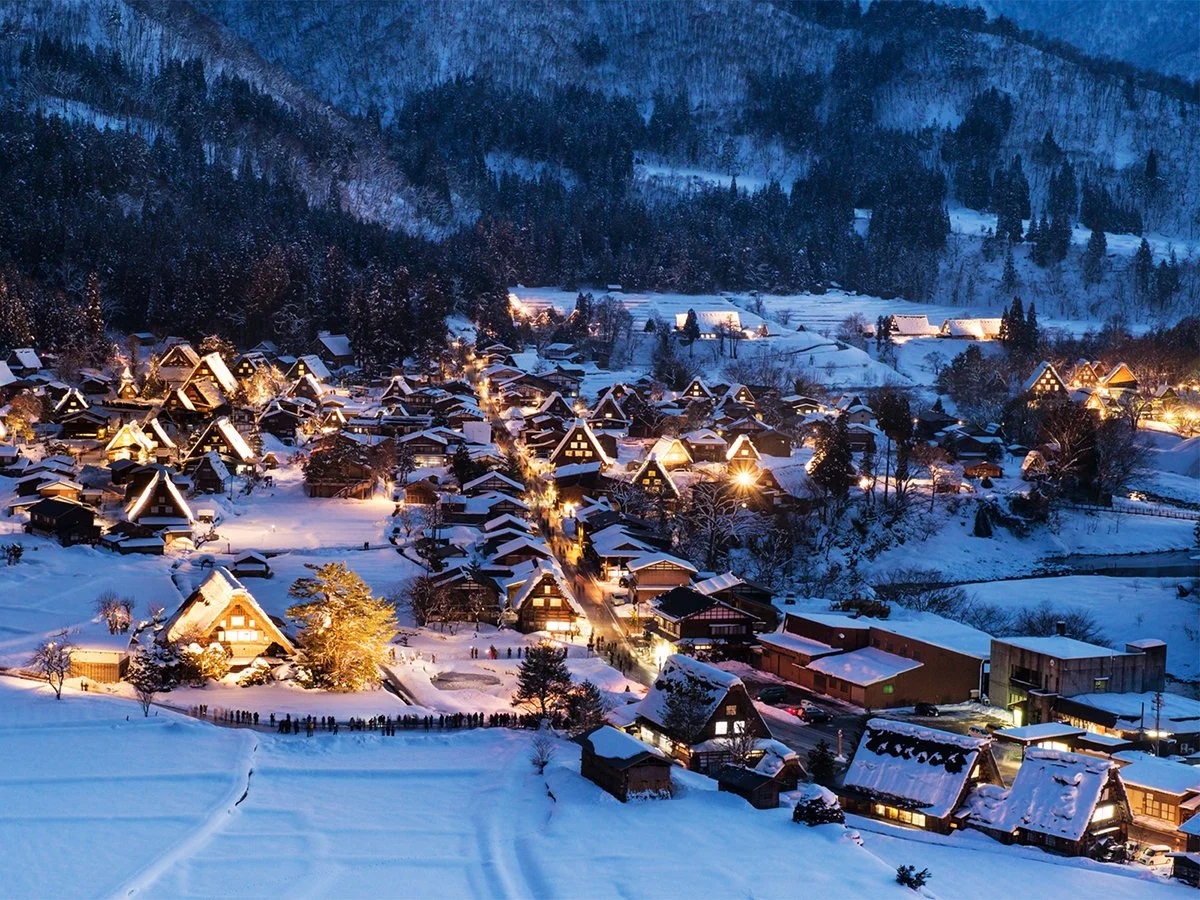A Year in Japan: The Ultimate Seasonal Guide

With four distinct seasons, each offering unique scenery, events, and tastes, Japan is a year-round destination.
Cover photo: The snow-covered thatched grass roofs of UNESCO World Heritage Site Shirarakawa-go are a famous winter sight, Gifu Prefecture (2013). Photo by annintofu and via Flickr (color-corrected and cropped).
Intro
I’ve lived in Japan for a year now, and each month has brought new experiences, from the beloved sakura (cherry blossoms) of spring, to summer festivals, autumn leaves, and winter snow. So then, what is the best time to visit? Of course, the answer depends on your interests, availability, and budget.
It’s best to make advance reservations. Prices in Japan are generally stable throughout the year, but they can surge wildly amid holidays and big events, falling to their lowest around February, as winter is the least popular time to visit Japan. Of course, spring is the most popular, followed by autumn, and summer. Each season offers its own advantages. Read on below for a detailed breakdown of weather, fresh foods, and events.
Crowds
Don’t fear crowds. As Japan is geographically isolated, domestic tourism is a big industry, with locals traveling frequently around the nation. Plus, as the oldest nation in the world, with many retirees, it’s virtually impossible to avoid locals at major attractions. After all, Tokyo is the most populous city in the world! Being in the crowd is part of the experience, so don’t let this deter you from your plans.
Climate
The months stated below are most accurate for central Japan, with large differences in the warmer south (Okinawa) and colder north (Hokkaido). Japan is a large nation, which stretches the length of the continental United States! The Okinawa Islands are about the same latitude as Miami, Tokyo shares a latitude with Los Angeles, and Sapporo is equivalent to Milwaukee. It’s best to check the weather of your specific destination.
Flexibility
Flexibility is always important when travelling, but especially in Japan. While the punctuality of Japan’s trains is world-famous, weather events can cause delays and cancellations in severe cases. Weather may also affect festivals, so always check online for the latest information.
Haru (Spring): March, April, May
Spring marks the start of the academic and fiscal year in Japan, officially beginning April 1st. This is Japan’s most crowded and expensive season, with everyone eager to see sakura (cherry blossoms).
Friends, family, and even coworkers gather together for hanami, enjoying picnics under the delicate petals, which last no longer than one week at a time. There are countless special events and local festivals, offering street-food, as well as sakura themed snacks and desserts.
The flowers are enjoyed in public spaces across the nation, with locals and foreigners alike closely following the micro-season with bloom forecasts. The blossoms can be seen as early as January in southern Japan, reaching central Japan by mid-March, and northern Japan by late April.
In addition to sakura, numerous species of flowers bloom, making this the best time to visit the gardens and parks throughout the nation, but be wary of allergies like cedar and cypress.
The weather is at its most comfortable, with only a light jacket necessary for the chilly mornings and evenings. This is also a busy season for geisha, offering many opportunities to see the unique artform.
Late spring includes several consecutive holidays known collectively as Golden Week. For most adults, this is their longest vacation of the year. As a result, accommodations are fully booked and trains completely packed. This time should be avoided.
Spring ends with a period of burnout known as gogatsubyō — literally “May disease” — as the excitement of graduation, vacation, and big life changes dissipates, leaving everyone eager for summer.
Blooming flowers: cherry blossoms, wisteria, hydrangea, tulips, violets, creeping phlox, camellias, nemophila, rose, poppies, iris.
Fresh fruit: strawberries, mango, and many citrus varieties.
Fresh vegetables: eggplant, turnips, cabbage, asparagus, bamboo shoots.
Fresh seafood: clams, sardines, cuttlefish, herring, rockfish, mackerel, sea bass, flounder, sweetfish.
Major events and holidays:
Hina Matsuri (Girl’s Day) celebrations (March 3rd)
White Day (Men’s Valentine’s Day) celebrations (March 14th)
Omizutori (Sacred Water Festival) in Nara (March)
AnimeJapan cartoon convention (March / April)
Vernal Equinox holiday (around March 20th)
Sakura (Cherry Blossom) season in central Japan (late March to early April)
Kanamara Matsuri (Penis Festival) in Kawasaki, Tokyo (early April)
Tokyo Rainbow Pride, Japan’s biggest queer festival (late April)
Ogon Shukan (Golden Week) holidays (late April to early May)
Hakata Dontaku Matsuri (Sunday Festival) in Fukuoka (May 3rd and 4th)
Children’s Day / Boys’ Festival holiday (May 5th)
Kanda Matsuri (Festival) in Tokyo (mid-May every other year) *Japan’s Top Three Festivals
Sanja Matsuri (Festival) in Asakusa, Tokyo (late May)
Natsu (Summer): June, July, August
Though generally regarded as off-peak for tourism, summer is busy in Japan. Many of the nation’s biggest events take place in the summer, including fireworks festivals that rival America’s Fourth of July celebrations.
The loud buzzing of cicadas fills the air, along with the gentle ringing of furin (wind chimes), as well as countless sighs of “atsui” (hot) and “mushi-mushi” (humid). It’s possible to travel light and the long days allow for plenty of sight-seeing.
June is the wettest month in Japan, with the rainy season — called tsuyu — generally lasting from the beginning of June to mid-July. Compared to other parts of Asia, Japan’s rainy season is mild, consisting only of frequent showers.
It’s vital to stay hydrated and to wear lightweight, breathable clothing. For festivals, many people don yukata (cotton kimono). An assortment of uchiwa (hand-fans) can be seen in the crowds.
The tastes of cold udon and soba noodles, as well as fresh watermelon, ramune (soda), and kakigori (shaved ice) help make the heat tolerable. This is also the season to relax at beer gardens.
People flock to the beaches of Japan’s long coastline to enjoy swimming, surfing, and other water activities. Others attend blockbuster summer music festivals, featuring both Japanese and foreign artists.
Throughout July, Kyoto’s Yasaka Jinja (Shine) hosts the Gion Matsuri, a purification festival meant to ward off plagues amidst the hottest month of the year. As one of Japan’s Three Great Festivals, the procession of decorated carts is a true spectacle.
The official climbing season for the famous dormant volcano that is known as Fujisan, or Mount Fuji, lasts from early July to early September. This is the only time of year the weather is safe enough for hikers. Rest stations and onsite physicians are also available, as the shortest trek up takes a minimum of five hours.
Scorching temperatures begin to fall in August, representing freedom for schoolchildren, as the month is their longest vacation of the year. There is a sense of nostalgia in the breeze of cooling summer evenings.
The season’s festivities end with Obon, a Buddhist ancestral festival celebrated with traditional music and folk dances. Though not a public holiday, many people take time-off to visit family, before autumn arrives.
Blooming flowers: lotus, sunflower, lavender, cosmos, morning glory, iris.
Fresh fruit: peach, melon, watermelon, cherries, grapes, plums, tomato.
Fresh vegetables: cucumber, okra, sweet corn.
Fresh seafood: eel, sea urchin, sea bass, flounder.
Major events and holidays:
Hyakumangoku Matsuri (One Million Rice Koku Festival) in Kanazawa (June 6th - 8th)
Sapporo Matsuri (Festival) (June 14th - 16th)
Kaizan-zenyasai (The Eve of Fuji's Opening) in Fujiyoshida (June 30th)
Hakata Gion Yamakasa (Grand Festival) in Fukuoka (July 1st - 15th)
Tanabata (Star Festival) celebrations (July 7th)
Gion Matsuri (Festival) in Kyoto (throughout July, with main events on the 17th and 24th) *Japan’s Top Three Festivals
Marine Day holiday (third Monday of July)
Tenjin Matsuri (Festival) in Osaka (July 24th and 25th) *Japan’s Top Three Festivals
Soma Nomaoi (Horse Festival) in Fukushima (late July)
Zento Eisa Matsuri (Folk Dance Festival) in Okinawa (August)
Nebuta Matsuri (Lantern Festival) in Aomori (August 2nd - 7th)
Hiroshima and Nagasaki U.S. Bombings Anniversary and Peace Memorial Ceremonies (August 6th and 9th)
Tanabata Matsuri (Star Festival) in Sendai (August 6th - 8th)
Mountain Day holiday (August 11th)
Obon (Buddhist Ancestral Festival) celebrations (August 13th - 16th)
Gozan Okuribi (Five Mountain Bonfires for Our Ancestors) in Kyoto (August 16th)
Awa Odori (Folk Dance Festival) in Tokushima (mid-August)
Koenji Awa Odori (Folk Dance Festival) in Tokyo (late August)
Aki (Autumn): September, October, November
While autumn is a comparatively quiet period of the year, it’s the second-most popular season to visit Japan, offering fresh harvests, geisha events, and brilliant foliage.
After students return from summer vacation, they begin preparations for Culture Festival and Sports Day, the most exciting events of the school calendar.
While past rainy season, autumn is still very wet. September is the peak of typhoon season, with southern Japan most vulnerable. It’s also the month of fresh bounty, celebrated with the glowing Harvest Moon, thought to be the most beautiful of the year. Japan’s autumnal cuisine includes tastes of roasted chestnuts, sweet potatoes, and persimmon.
October offers a playful respite as scary events are hosted at western theme parks and decorations can be found across storefronts. On the night of Halloween, people gather around Shibuya in Tokyo and Shinsaibashi in Osaka for rowdy public celebrations, often dressed in their favorite anime cosplay.
Koyo (fall foliage) reaches its peak in November, painting the landscapes of central Japan in rich colors of red, orange, and yellow. It’s a time for scenic hikes as well as train and boat rides to appreciate the ever-changing landscape.
Blooming flowers: spider lily, cosmos, kochia, chrysanthemum.
Fresh fruit: figs, pear, grape, persimmon, yuzu.
Fresh vegetables and nuts: sweet potato, taro, mushrooms, pumpkin, ginko nuts, chestnuts, peanuts.
Fresh seafood: salmon, octopus, bonito, crab.
Major events and holidays:
Kishiwada Danjiri Matsuri (Wooden Cart Festival) in Osaka (September 9th and 10th)
Otsukimi (Moon Viewing) celebrations (mid-September)
Respect for the Aged Day holiday (third Monday of September)
Autumnal Equinox holiday (around September 22)
Tokyo Citizen’s Day (October 1st)
Nagasaki Kunchi (Celebration) (October 7th - 9th)
Sports Day holiday (second Monday of October)
Nada Kenka Matsuri (Fighting Festival) in Himeji (October 14th and 15th)
Jidai Matsuri (Festival of the Ages) in Kyoto (October 22nd)
Halloween celebrations (October 31st)
Karatsu Kunchi (Autumn Festival) in Saga (November 2nd - 4th)
Culture Day holiday (November 3rd)
Shichigosan (Three-Five-Seven Festival) celebrations November 15th
Tori-no-Ichi (Rooster Market Festival) in Asakusa, Tokyo (November)
Labor Thanksgiving Day holiday (November 23rd)
Fuyu (Winter): December, January, February
As a Texan native, I find Japan at its least hospitable in winter. The numbing cold is overwhelming. Venturing outside requires boots and heavy coats. The days are depressingly short, with the sun setting as early as 4:30 PM.
In December, as the fall foliage begins to wilt, winter illuminations go up, along with traditional protective structures like yukitsuri (snow hangings), bamboo and rope supports for the precisely manicured trees.
Locals crawl under their kotatsu (heated table with blanket) and enjoy baths with yuzu, citrus fruit. Stews, curry, and nabe (hot pot) are popular winter staples. The season also offers the delicacy of fresh-caught crab.
Around December 13th, decorations of kadomatsu (pine gates) appear to welcome happiness and good spirits. While Christmas is not a public holiday, many families gather for a special western-inspired dinner, consisting of fried chicken and strawberry shortcake.
Starting around December 28th, many shops and restaurants have reduced hours, if open at all. On New Year’s Eve, around midnight, temples ring their bells 108 times to cleanse attendees of last year’s earthly desires.
On New Year’s Day, everyone eats osechi ryori, a luxurious meal filled with symbolic foods, and pays their first visit to a shrine or temple in the new year, a practice called hatsumode. Children also receive envelopes of money from family.
January is the coldest month of the year, with much of Japan’s landscape blanketed in white. The freezing temperatures make onsen (hot spring) towns and ryokan (private hot spring hotels) especially popular destinations.
It’s a time to enjoy snow festivals, admire snow monkeys, and to make snowmen. Athletes will find that Japan offers some of the best winter sports in the world, like skiing and snowboarding.
For thrifty shoppers, January offers some of year’s best deals, including the sale of fukubukuro (lucky bags), mystery giftbags filled with goods at discounts of up to 50%. January is also the start of sumo wrestling season, with six official tournaments held throughout the year, in Tokyo, Osaka, Nagoya, and Fukuoka.
Though the lunar new year is not officially observed in Japan, many festivals can be enjoyed in Chinese neighborhoods across the nation, with Nagasaki and Yokohama the most popular destinations.
February begins with the celebration of Setsubun, which marks the seasonsal division of the traditional Japanese calendar. Locals throw beans to expel oni (demons) and winter gloom.
Travel and accomodation prices hit their lowest in February, making it a good month for budget travellers willing to brace the thawing cold. Plum blossoms appear mid-February, promising the arrival of spring.
Blooming flowers: sasanqua, peonies, camellia, daffodils, plum blossoms.
Fresh fruit: apples, oranges, grapefruit, kiwi.
Fresh vegetables: daikon, cabbage, lotus root, broccoli, cauliflower, brussel sprouts, carrot.
Fresh seafood: yellowtail, tuna, sweet shrimp, oysters, pufferfish, monkfish.
Major events and holidays:
Tokyo Christmas Market (December)
Chichibu Yomatsuri (Night Festival) in Saitama (December 2nd and 3rd)
Kasuga Wakamiya Onmatsuri (Grand Festival) in Nara (December 15th - 18th)
Business Closures (December 28th - January 4th)
Namahage (Ogre Visit) in Akita (December 31st)
Omisoka (New Year’s Eve) (December 31st)
Shogatsu (New Year) holiday and Hatsumode (January 1st)
Coming of Age Day holiday (second Monday of January)
Nozawa Fire Festival in Nagano (January 15th)
Nagasaki Lantern Festival during Chinese New Years (late January / early February)
Setsubun (Oni Banishment) celebrations (early February)
Yuki Matsuri (Snow Festival) in Sapporo (early February)
National Foundation Day holiday (February 11th)
Valentine’s Day (February 14th)
Emperor’s Birthday holiday (February 23rd)
Hadaka Matsuri (Naked Festival) in Okayama (late February)










